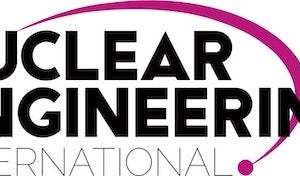In routine use since 1998, the JET remote handling system has developed from a small-scale capability for routine maintenance work in between experiments, to one that has undertaken the lion’s share of the recent refurbishment that has now transformed JET into a ‘mini-ITER’.

Remote handling control room at work
The remote handling system comprises two articulated booms. One boom is equipped with a two-armed master-slave manipulator, known as Mascot, which allows an operator in the remote handling control room to work within the machine without actually being exposed to the hazardous environment. A variety of tools have been designed and manufactured to equip Mascot for a wide range of jobs, from welding and wiring to the installation of complex and expensive diagnostics. The second boom is used to move components from a transfer facility into the machine.
The movement of the booms is performed with pre-defined and recorded sequences of steps. The booms are controlled in two different ways. Firstly, the paths that they follow are developed in advance by remote handling engineers. The paths are created from a sequence of steps or ‘check points’. When complete, the sequence of check points is saved as a ‘teach and repeat’ file. The teach file can then be used every time that task is performed. Each teach file has to be selected, initiated and monitored by the operator. The booms do not move automatically, as the control system is not aware of the environment. Secondly, each boom joint can be driven manually by the operator. This method of operation is used for moving cameras that are mounted on the boom and for making adjustments to Mascot’s position when the boom has arrived at the work area.
For controlling Mascot itself, the operator’s input is required for each sequence of moves. It is an ideal combination of the man being in control and the machine doing the work: the durability of Mascot together with the intuition and intelligence of a human being. Human commands to the ‘master’ are interpreted by the control system and then duplicated on the ‘slave’ mounted on the end of the boom. When the ‘slave’ comes into contact with a surface, the control system shows this to the operator by creating an opposing force on the master. This is important as the operator can ‘feel’ what he is doing, allowing him to react far quicker to things like misaligned dowels and bolts. The force-feedback system gives an accurate sensation of Mascot’s movements and weight to within a few grams. Operating Mascot is no easy task. On average it takes three months of training —even including the use of Jenga blocks—to fine-tune the operator’s control of the manipulator and reach the standards of precision needed to work inside JET. An array of 16 video camera angles and a virtual reality bird’s-eye view of the entire vessel are therefore invaluable in guiding the engineers as they oversee the manipulator’s intricate manoeuvres.
To prepare for the outage work, the control systems and human-machine interface were adapted to accommodate the operation of the newly-extended boom. The arm’s extra length and additional joints led to a recalculation of the trajectory that operators could work with to keep a safe distance from the vessel. A virtual rail was used to move the booms between locations, maintaining a constant safe distance from the vessel wall. In the same way, the closer proximity of the two booms within JET necessitated a new series of planned movements to bring them to positions where the exchange of materials could be carried out. The pre-planned sequence of moves and operations were documented in a specifically-designed software application for the operators to load up when required.
Related ArticlesJET experiment ticks the boxes for ITER Reinventing JET, piece by piece






